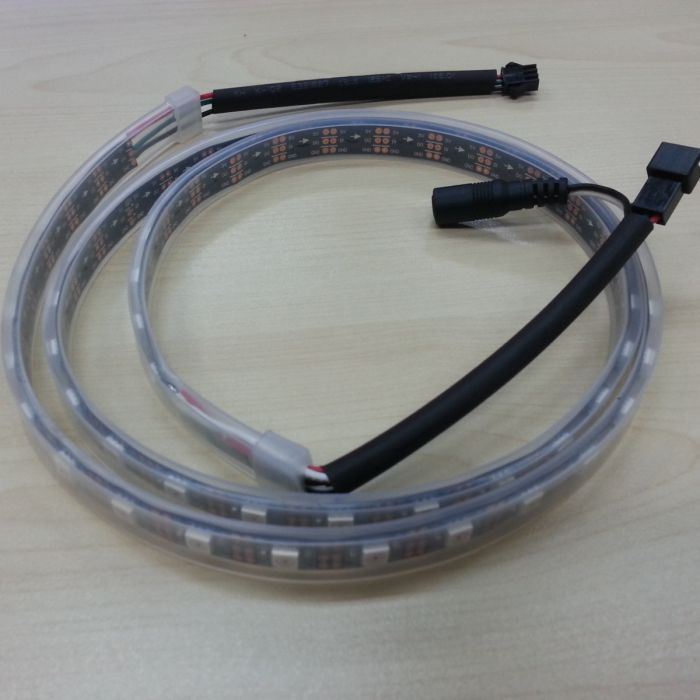Using the LED strip
Each LED strip has three connection points: the input connector, the auxiliary power wires, and the output connector. These can be seen in the adjacent picture,
from left to right: auxiliary power wires, input connector, output connector. The strip uses 3-pin JST SM connectors.
The input connector has three male pins inside of a plastic connector shroud, each separated by about 0.1″. The black wire is ground,
the green wire is the signal input, and the red wire is the power line.
The auxiliary power wires are connected to the input side of the LED strip and consist of stripped black and red wires. The black wire is ground,
and the red wire is the power line. This provides an alternate (and possibly more convenient) connection point for LED strip power.
The output connector is on the other end of the strip and is designed to mate with the input connector of another LED strip to allow LED strips to be chained.
The black wire is ground, the green wire is the signal output, and the red wire is the power line.
All three black ground wires are electrically connected, and all three red power wires are electrically connected.
It is convenient that the power wires are duplicated on the input side because you can connect the auxiliary power wires to your 5 V power supply and then the power
will be available on the data input connector and can be used to power the microcontroller that is controlling the LED strip.
This means you can power the microcontroller and LED strip from a single supply without having to make branching power connections.
Chaining
Multiple LED strips can be chained together by connecting input connectors to output connectors. When strips are chained this way, they can be controlled and powered as one continuous strip.
Please note, however, that as chains get longer, the ends will get dimmer and redder due to the voltage drop across the strip. If this becomes an issue, you can chain the data lines while separately powering shorter subsections of the chain.
We recommend chains of LEDs powered from a single supply not exceed 180 total RGB LEDs. It is fine to make longer chains with connected data lines, but you should power each 180-LED section separately.
If you are powering each section from a different power supply, you should cut the power wires between the sections so you do not short the output of two different power supplies together.

